Today, December 9, we celebrate the feast day of Saint Juan Diego Cuauhtlatoatzin (1474-1548), visionary of Our Lady of Guadalupe, and the first Catholic saint indigenous to the Americas. Saint Juan is a model of Christian steadfastness, walking 15 miles to attend Mass each day, and an example of profound humility, stating to Our Blessed Mother: “I am a nobody, I am a small rope, a tiny ladder, the tail end, a leaf.”
Little is factually known about the life of Juan Diego Cuauhtlatoatzin before his conversion at age 50 by Franciscan missionaries. However, tradition, archeological, and iconographical sources, along with the indigenous document detailing the events of the apparitions at Guadalupe (“El nican Mopohua,” written in Náhuatl with Latin characters in 1556) shed some light on this simple and holy man.
Born with the name "Cuauhtlatoatzin" (which means "the talking eagle") in Cuautlitlán, (modern-day Mexico City), Mexico, Juan was a member of the Chichimeca people, a culturally advanced group living in Anáhuac Valley. Thought to an average man, of neither the upper respected classes of priests, warriors and merchants, but also not a slave, Juan is likely to have owned a small house and farmed a small tract of land. He was happily married, although had no children. The remainder of his life is lost to history until his encounter with Franciscan priest, Father Peter da Gand. At age 50, Juan accepted Christ into his life, converting to Catholicism and being baptized. Every day thereafter, he walked more than 15 miles barefoot to attend daily Mass.
The events of December 9, 1531, occurred during his usual morning walk, when on the crest of Tepeyac Hill (outside Mexico City), the Blessed Virgin Mary appeared to him. Known as Our Lady of Guadalupe (whose feast we celebrate in just 3 days on December 12), Our Lady requested that Juan visit the local bishop and request that a shrine be built in her name. She further promised to pour out her unending grace on those who invoked her. Our Lady talked to Juan in his language, Nahuatl. She called him "Juanito, Juan Dieguito,” "the most humble of my sons,” "my son the least,” and "my little dear.”
Indeed a humble man, Juan obediently visited the bishop, who did not believe the wild tale—especially from a “nobody.” Why would the Blessed Virgin appear to such a simple man? He requested that Juan return with a sign to prove that the apparition was true. Three days later, on December 12 (the Feast of Our Lady of Guadalupe), Juan was again climbing Tepeyac Hill and encountered Our Lady again. She instructed him to climb to the top of the hill and to pick the flowers he would find there. Despite it being wintertime, he obeyed, climbing the hill, finding fragrant roses in blossom. He picked the flowers and carried them to Our Lady. She gently placed them in his mantle (robe) and instructed him to take them to his bishop as proof of his claims and her appearance.
Juan carefully carried the flowers back to the bishop, and miraculously found that when he opened his mantle and the flowers fell to the ground, in their place was an image of the Blessed Mother as she appeared at Tepeyac. The bishop was convinced and ordered a church built for Virgin of Guadalupe, which became a place of pilgrimage for the faithful.
For his part, Juan requested that he be allowed to live in hermitude in a small hut near the chapel that was built to house the miraculous image. Receiving permission from the bishop, he gave up all his worldly possessions and lived his remaining years caring for the church and the pilgrims who visited, venerating the image, and praying for the grace of Mary. Upon his death, he was buried in the chapel of the Virgin of Guadalupe.
Pope John Paul II called Juan “a simple, humble Indian” who accepted Christianity without giving up his identity as an Indian. “In praising the Indian Juan Diego, I want to express to all of you the closeness of the church and the pope, embracing you with love and encouraging you to overcome with hope the difficult times you are going through,” the pope said. Among the thousands present for the event were members of Mexico’s 64 indigenous groups.
Saint Juan Diego reminds us of the universality of the Church, and that the Lord and His Blessed Mother value each of us equally. In the end, as we read the lives of the saints, it becomes clear that race, gender, class, wealth, disability, appearance, culture, sexual orientation—all the things that divide us—are unimportant in the eyes of Lord. Rather, the willingness to open one’s heart, to serve, to embrace the Christian virtues of faith, hope, and charity—to be obedient to the Word of God—these are the things that matter on earth.
From the beatification homily delivered by Pope John Paul II:
At the dawn of Mexican evangelization Saint Juan Diego holds a place all by himself; according to tradition, his indigenous name was Cuauhtlatohuac, “The eagle who speaks”. His lovable figure is inseparable from the Guadalupe event, the miraculous maternal manifestation of the Virgin, Mother of God, both in iconographic and literary memorials as well as in the centuries-old devotion which the Mexican Church has shown for this Indian so loved by Mary. Similar to ancient Biblical personages who were collective representations of all the people, we could say that Juan Diego represents all the indigenous peoples who accepted the Gospel of Jesus, thanks to the maternal aid of Mary, who is always inseparable from the manifestation of her Son and the spread of the Church, as was her presence among the Apostles on the day of Pentecost. The information about him that has reached us praises his Christian virtues: his simple faith, nourished by catechesis and open to the mysteries; his hope and trust in God and in the Virgin; his love, his moral coherence, his unselfishness and evangelical poverty. Living the life of a hermit here near Tepeyac, he was a model of humility. The Virgin chose him from among the most humble as the one to receive that loving and gracious manifestation of hers which is the Guadalupe apparition. Her maternal face and her Saint image which she left us as a priceless gift is a permanent remembrance of this. In this manner she wanted to remain among you as a sign of the communion and unity of all those who were to live together in this land. The recognition of the cult which for centuries has been paid to the layman Juan Diego takes on a special importance. It is a strong call to all the lay faithful of this nation to assume all their responsibilities, for passing on the Gospel message and witnessing to one faith active and working in the sphere of Mexican society. From this privileged spot of Guadalupe, ever-faithful heart of Mexico, I wish to call on all the Mexican laity, to commit themselves more actively to the re-evangelization of society. The lay faithful share in the prophetic, priestly and royal role of Christ (cf. Lumen Gentium, 31), but they carry out this vocation in the ordinary situations of daily life. Their natural and immediate field of action extends to all the areas of human coexistence and to everything that constitutes culture in the widest and fullest sense of the term. As I wrote in the Apostolic Exhortation Christifideles Laici: “In order to achieve their task directed to the Christian animation of the temporal order, in the sense of serving persons and society, the lay faithful are never to relinquish their participation in public life, that is, in the many different economic, social, legislative, administrative and cultural areas, which are intended to promote organically and institutionally the common good” (n. 42). Catholic men and women of Mexico, your Christian vocation is, by its very nature, a vocation to the apostolate (cf. Apostolicam Actuositatem, 3). Therefore, you cannot remain indifferent before the suffering of your brothers and sisters: before the poverty, corruption and outrages committed against the truth and human rights. You must be the salt of the earth and the light of the world (cf. Matthew 5:13-14). Thus the Lord says once more to us today: “Let your light shine before men that they may see your good works and glorify your Father who is in heaven” (Mt 5:16). Juan Diego too shines before you, raised by the Church to the honors of the altar; we can invoke him as the protector and the advocate of the indigenous peoples.”
Prayer to Saint Juan Diego
You who were chosen by Our Lady of Guadalupe as an instrument to show your people and the world that the way of Christianity is one of love, compassion, understanding, values, sacrifices, repentance of our sins, appreciation and respect for God's creation, and most of all one of HUMILITY and obedience. You who we know is now in the Kingdom of the Lord and close to our Mother, be our angel and protect us, stay with us as we struggle in this modern life not knowing most of the time where to set our priorities. Help us to pray to our God to obtain the gifts of the Holy Spirit and use them for the good of humanity and the good of our Church, through the Heart of Our Lady of Guadalupe to the Heart of Jesus. Amen.
Blessed Juan, you faced the skepticism and rejection of a bishop and the crowds to bring Mary's message to Mexico. Pray for us that when we are faced with obstacles to our faith we may show that same courage and commitment. Amen.
Lord God,
hrough Saint Juan Diego
You made known the love of Our Lady of Guadalupe
toward Your people.
Grant by his intercession
that we who follow the counsel of Mary, our Mother,
may strive continually to do Your will.
We ask this through our Lord Jesus Christ, Your Son,
who lives and reigns with You and the Holy Spirit. Amen.
Day 343 of 365
Prayer Intentions: Unity within the Church; Humility and Obedience; For all those who are marginalized, maligned, and mistreated.
Requested Intentions: Successful employment and financial assistance for education (M); For the return home of father and husband suffering from mental illness (C); Successful passing of examination; Employment for Son (J); Healing of a family and son (S); Successful marriage (G); End to husband’s addictions; Son’s employment (M); Freedom from financial burdens (M); Healing after a miscarriage (E); For healing of friend; successful resolution of legal matter (A); For unity between estranged friends (E); For a son, falsely arrested (C); Successful employment (J); Successful employment (L); For a healthy child (L); Recovery from stomach illness of a friend (A); Employment and financial security (E); Conversion of sons (L); Freedom from financial stress, employment (C); Spiritual growth and family peace (A); Freedom to immigrate (D); End to debt (N); Restoration of a marriage (J); Complete recovery of son (P); Recovery of parish priest, health of mother, conversion of son (J); Successful employment, end to depression (J); Successful immigration and employment (S); Conversion of an unloving daughter (M); Recovery of husband, health of mother, economic freedom (R); Freedom from depression, restoration of family relationships (N); Restoration of a relationship (J); Healing of friends from cancer (J); Complete healing of a friend with pancreatic cancer (J); Healing of a father following stroke (S).
Why pray the Rosary every day for a year?
Each time the Blessed Virgin has appeared-- whether it be to Saint Bernadette Soubirous at Lourdes; to Lucia, Jacinta, and Francisco at Fatima; or to Mariette Beco at Banneux-- she has asserted the importance, saving grace, and power of praying the Holy Rosary on a daily basis. Based upon her words, the Rosary is penance and conversion for sinners, a pathway to peace, an end to war, and a powerful act of faith in Jesus Christ. Pope Paul VI presented the Rosary as a powerful means to reach Christ "not merely with Mary but indeed, insofar as this is possible to us, in the same way as Mary, who is certainly the one who thought about Him more than anyone else has ever done."
To show us how this is done, perhaps no one has been more eloquent than the great Cardinal Newman, who wrote: "The great power of the Rosary consists in the fact that it translates the Creed into Prayer. Of course, the Creed is already in a certain sense a prayer and a great act of homage towards God, but the Rosary brings us to meditate again on the great truth of His life and death, and brings this truth close to our hearts. Even Christians, although they know God, usually fear rather than love Him. The strength of the Rosary lies in the particular manner in which it considers these mysteries, since all our thinking about Christ is intertwined with the thought of His Mother, in the relations between Mother and Son; the Holy Family is presented to us, the home in which God lived His infinite love."
As Mary said at Fatima, "Jesus wants to use you to make Me known and loved. He wishes to establish the devotion to My Immaculate Heart throughout the world. I promise salvation to whoever embraces it; these souls will be dear to God, like flowers put by Me to adorn his throne."
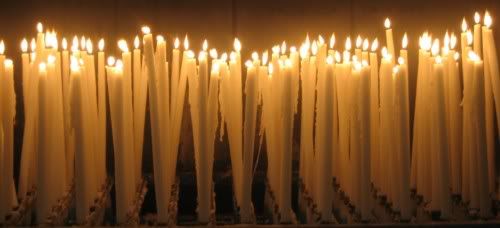
Subscribe to:
Post Comments (Atom)






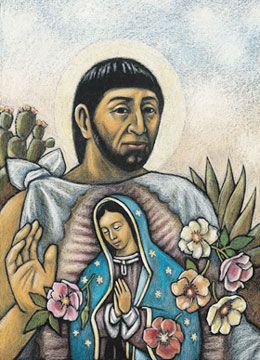
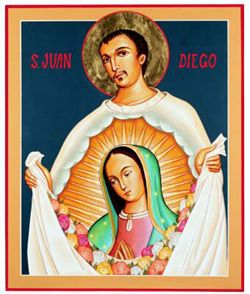


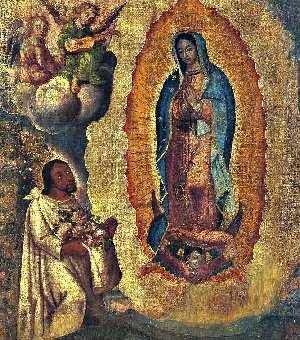
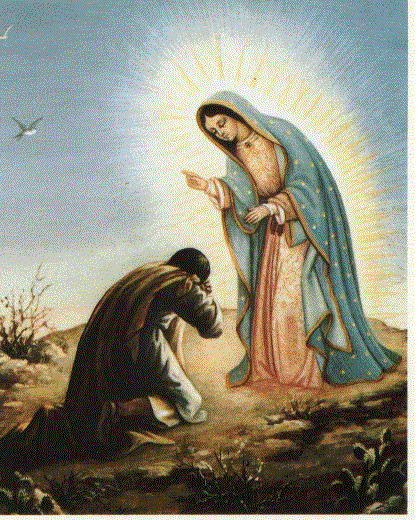

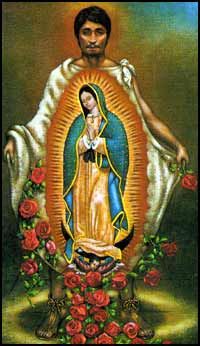

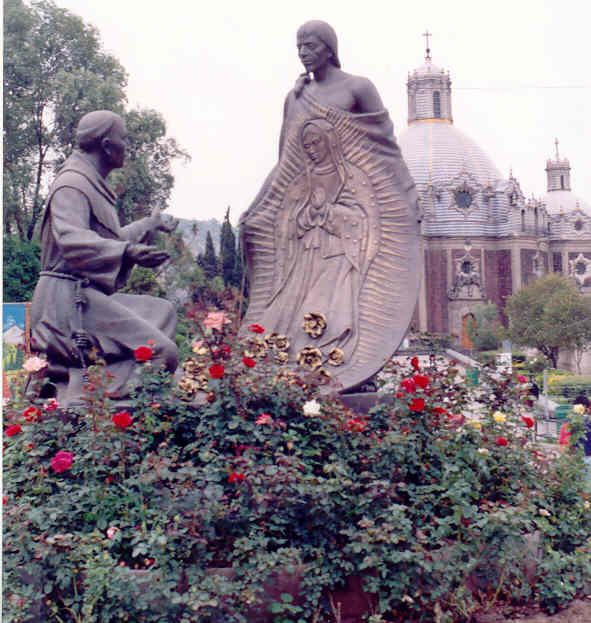
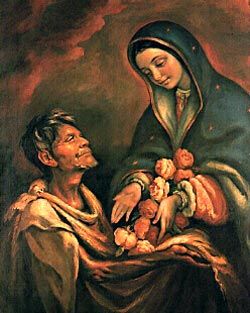

Lord Jesus, i jusk ask that how your mother appreaed to Juan diego , same can appear to purnima and her family that she also starts loving your mother as we all do. thanks for hearing my prayer.thank you